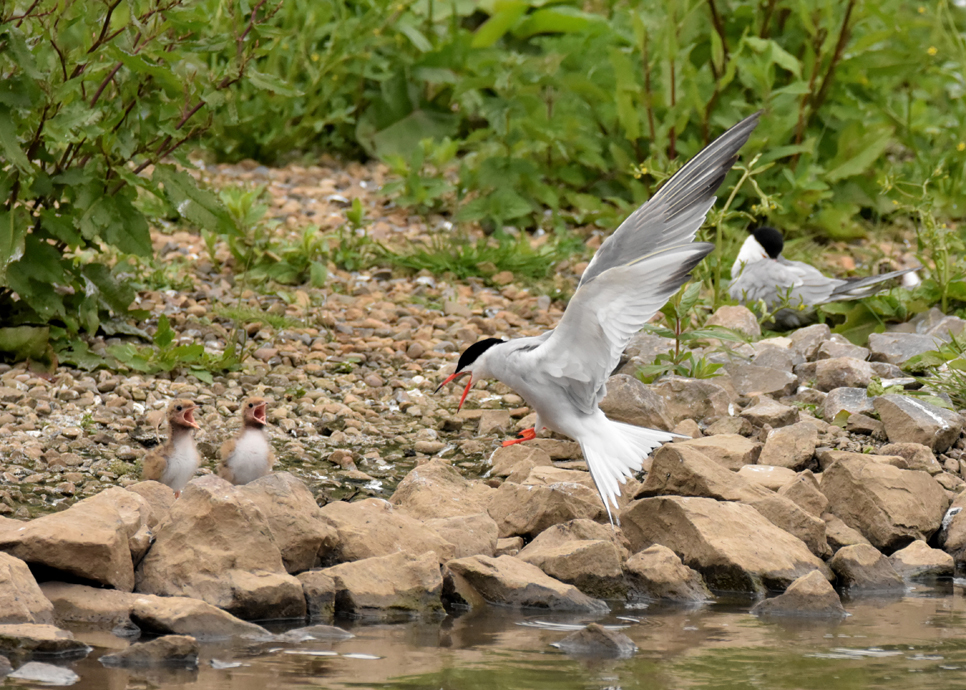WWT Washington achieves ‘TOP 10’ status for UK common tern populations

Washington Wetland Centre has been ranked in the ‘Top 10’ sites for common tern in Great Britain.
Our site has been named the ninth most important in the UK for populations of amber-listed common tern by a Wetland Bird Survey (WeBS) data report from the British Trust for Ornithology (BTO).

Common tern are a key summer wildlife spectacle for many visitors to Wader Lake, with noisy up-close encounters and aerobatic performances easily viewed from the hides, as they nest, breed and raise their young.
These agile seabirds breed in large colonies, nesting on the ground on pebbled shores and islands. WWT Washington’s main lake has several shingle islands covered with the perfect pea gravel habitat for them to nest and thrive.
This habitat was improved in 2015 thanks to Biffa Award funding - which supported the creation of a new, larger island - and numbers of tern were boosted from around 100 individual birds to an incredible 170 nesting pairs, with more than 120 chicks now fledging on average each year.
 WWT Washington’s reserve manager John Gowland said: “Common tern are a very charismatic, albeit noisy bird. Many visitors, both keen bird watchers and first-time visitors, are pulled in by their graceful displays and dramatic feeding – often diving into the lake for small fish. The noise is incredible and you can’t help but smile when you hear it!”
WWT Washington’s reserve manager John Gowland said: “Common tern are a very charismatic, albeit noisy bird. Many visitors, both keen bird watchers and first-time visitors, are pulled in by their graceful displays and dramatic feeding – often diving into the lake for small fish. The noise is incredible and you can’t help but smile when you hear it!”
“WWT Washington covers an area of 41.7 hectares, with Wader Lake covering 12.3 hectares - this rivals far more extensive sites that cover landscape-scale features, including estuaries, coastal bays and harbours.”
The data report also highlighted several other key bird species at Washington Wetland Centre, where populations have ranked well in the UK, including grey heron (15th), avocet (37th) and red-listed curlew (47th).
John added: “Our team works really hard on the management of our reserve and we keep a careful eye on vegetation and water levels.
“We’re thrilled this work continues to be rewarded with such wonderful wildlife and that we have now been recognised as such an important site for common tern - which are amber-listed in the UK - as well as many other species.”
Ready to visit?
If you've been inspired to explore Washington Wetland Centre this summer and see the common terns for yourself, find out more and plan your visit online.



